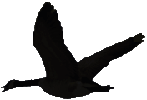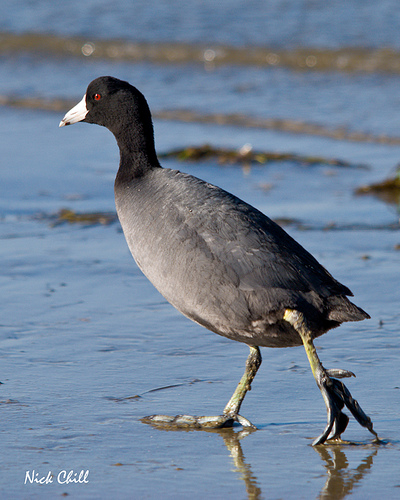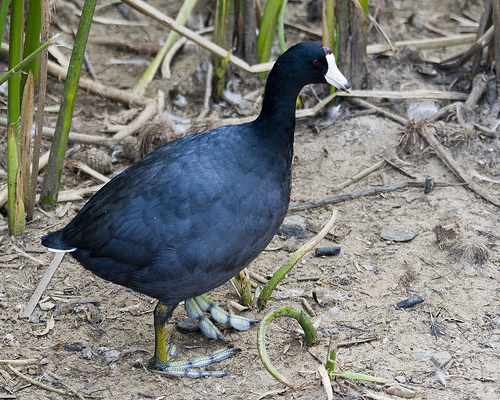Adaptations
Now if you think you know someone with big feet you have not seen the American Coot up close. The feet of this awkward bird might seem weird to you and I but the feet are actually one reason why American Coots live, eat, and move the way they do. We call this an adaptation to their lifestyle so they are better able to live in its environment and habitat. The physical and morphological adaptations that I will introduce you to are the beak, wings, and feet.
Each organism must adapt its structure to acquire the right food to give the most energy. The class Aves all have beaks as a modified mouth part to obtain food. Beaks are part of the skull of every bird and are covered with a tough layer of skin. The beaks can be modified to eat seeds, fish, berries, insects, or other various food items. If you would like to learn more about what the American Coot eats check out the Nutrition page. A filter type beak mixed with a catching insects type beak is what the American Coot has. This type of beak is good for filtering plant material as food from the mud and water. The beak is flatter and is good for the Coot because when it comes to feeding the young the parents can easily filter the food that is acceptable for their young. Also, because they spend almost all of their time in the water it's a good thing to not be taking up excessive amounts of water and mud with every bite of food. The catching insect type beak mixed in is not that noticeable but the American Coot does spend a good amount of time on land as well as the water and searches the ground to find suitable nutritious items.

The American Coot does have wings and are classified as short and wide wings. Even though wings are present it does not mean that they fly all the time (look at the penguin and ostrich...they never fly). In fact, the American Coot spends as little time flying as possible. The short and wide wings are perfect for lifting off to fly. To start flying the Coot runs across the water and flaps its wings to grab the air and lift off. Even thought taking off is a more graceful process flying long distances is not so much. The short and wide wings are not built to glide through the air very far because they are not that strong. When these birds do fly they are usually flying in groups called flocks, covers, or rafts.
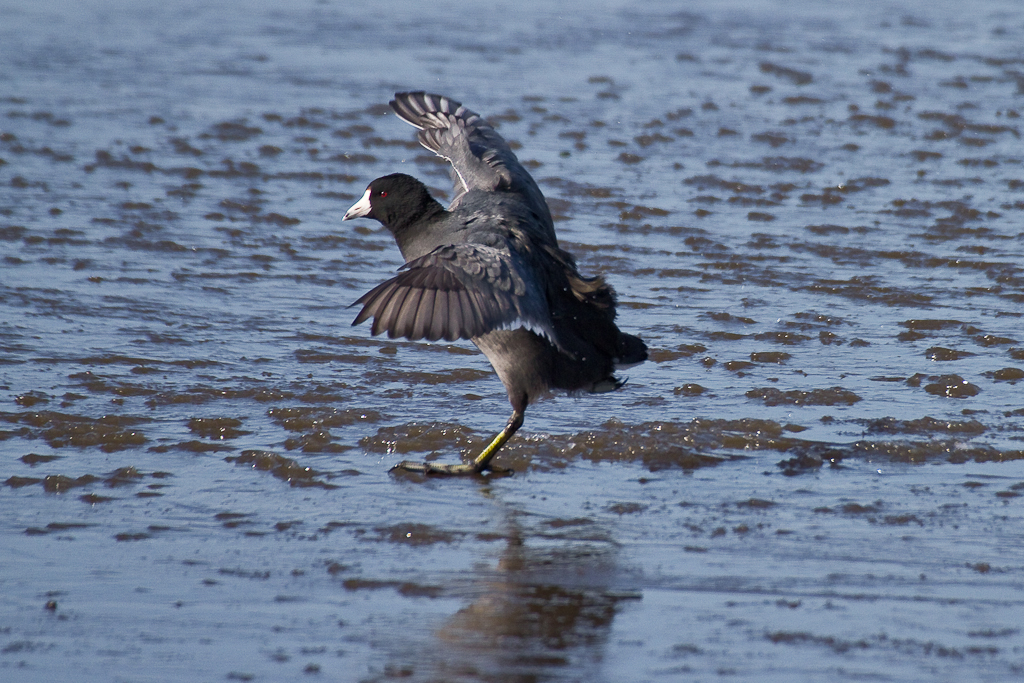
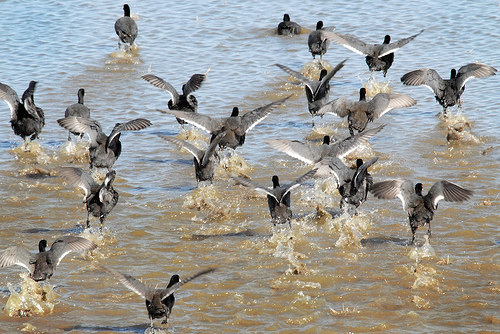
And now the moment you have all been waiting for....the infamous
feet of the American Coot. As you can see by the picture the
toes are lobed. This is the major difference between the American Coot and the common duck because the duck has webbed feet.
There are a total of four toes on the foot of the American Coot,
three larger toes facing forward and a smaller toe facing backwards.
The main purpose of the lobed toes is to help the bird run.
These feet are good for the American Coot for walking on top of
vegetation in marshes and also on dry land when they're looking for
food items on the ground. In the water the American Coot uses
their big feet to propel themselves through the water.
Although not as effective as webbed feet like the duck, the toes of
the American Coot are perfect for the environment they are normally
found in. Recall in the previous paragraph that Coots also run
across the water surface to take off in flight. If their feet
were webbed the Coots would most certainly get nowhere trying to run
across the surface of the water. Another plus for the giant
toes is the American Coot can withstand higher temperatures because
of the hardy outside layer and the dissipation of excess body heat
through the feet.
American Coot and the common duck because the duck has webbed feet.
There are a total of four toes on the foot of the American Coot,
three larger toes facing forward and a smaller toe facing backwards.
The main purpose of the lobed toes is to help the bird run.
These feet are good for the American Coot for walking on top of
vegetation in marshes and also on dry land when they're looking for
food items on the ground. In the water the American Coot uses
their big feet to propel themselves through the water.
Although not as effective as webbed feet like the duck, the toes of
the American Coot are perfect for the environment they are normally
found in. Recall in the previous paragraph that Coots also run
across the water surface to take off in flight. If their feet
were webbed the Coots would most certainly get nowhere trying to run
across the surface of the water. Another plus for the giant
toes is the American Coot can withstand higher temperatures because
of the hardy outside layer and the dissipation of excess body heat
through the feet.
The beak, wings, and especially the feet of the American Coot are all special attributes that make this bird very unique to the wetlands of North America and very interesting to appreciate. This bird most definitely takes home the prize for best feet and next time you spot a bird with large lobed feet it is by no means a duck!
Click here to go back and learn about where the American Coot lives.
Click here to learn about what the American Coot likes to eat.
